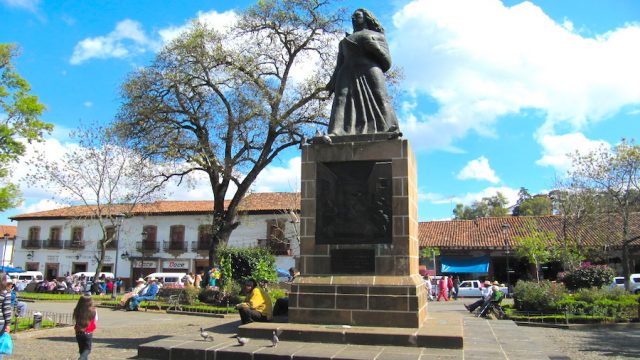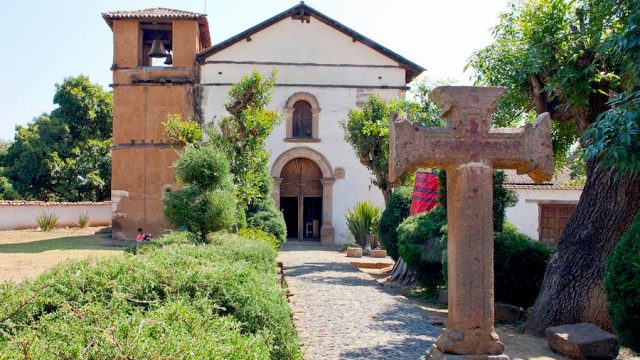 Following the road to Morelia, about 20 minutes past Quiroga is Capula (“cherry place”), where the main activity is pottery production: china, table service dinner sets, platters, and flower pots, among other things. All this is worked in two original styles of ceramics, one of red clay or “charanda”, decorated in colors such as white, green and blue, with fish, flowers and Greek friezes, and the other with a yellow background, ornamented in red and green tones and with birds, flowers or greek friezes.
Following the road to Morelia, about 20 minutes past Quiroga is Capula (“cherry place”), where the main activity is pottery production: china, table service dinner sets, platters, and flower pots, among other things. All this is worked in two original styles of ceramics, one of red clay or “charanda”, decorated in colors such as white, green and blue, with fish, flowers and Greek friezes, and the other with a yellow background, ornamented in red and green tones and with birds, flowers or greek friezes.
A skeleton dressed in period, with his wide-brimmed hat adorned with flowers, his lace and a feathered serpent like a rebozo greets everyone who arrives in Capula. It is the catrina, the symbol of this small pottery town of the Don Vasco Route, famous for being the place where these emblematic emblematic figures from all over Mexico are made. It was Don Juan Torres, famous international artist who made Capula his home, who popularized the catrina decades ago. Today, hundreds of small family workshops in the village keep their legacy alive, adding in each batch new designs and the personal stamp of each craftsman.
Capula, Michoacán, México.
One of the attractions of the community of Capula is the Church of Santiago Apóstol, which was built in the sixteenth century; It consists of a single nave and roof with two waters. The decoration that shows the cover corresponds to several medallions with motives apparently of the saints creators of the diverse religious orders that arrived at Michoacán: Franciscans, Augustinians, Jesuits and Dominicans. The Christ found in this Church shows indigenous features and was found in excavations. Its tower was built at the end of the 19th century. Every July 25 the town celebrates its patron saint, Santiago Apóstol.
Iglesia de Santiago Apóstol, Capula, Michoacán, México.



















































































